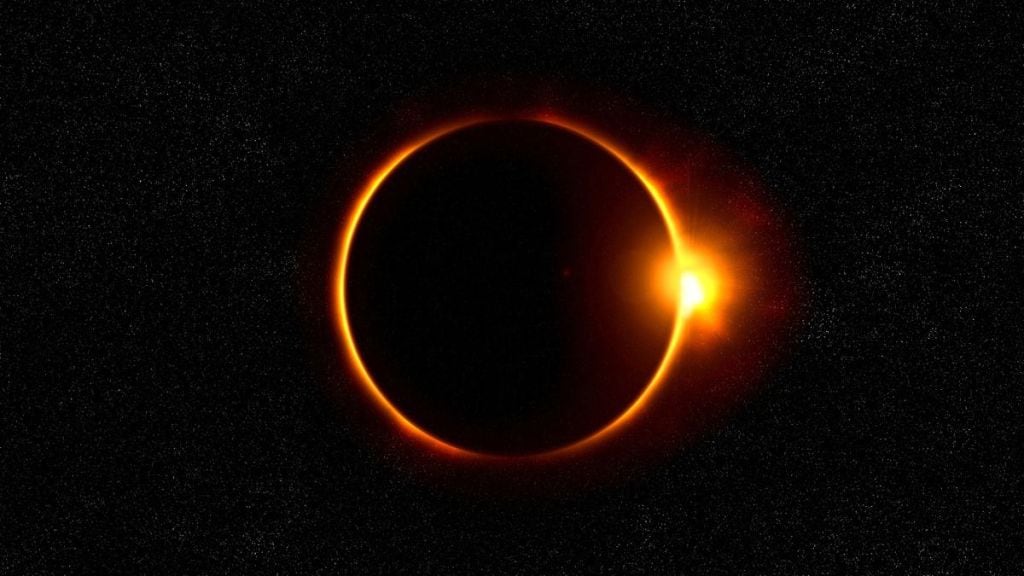North America is preparing for a total solar eclipse of unprecedented scale on April 8, 2024. This phenomenon brings about a period of darkness during the day, providing observers with the chance to witness the sun’s corona directly with the naked eye. However, despite the excitement surrounding this event, only a few truly grasp the rarity and uniqueness of what is about to occur.
This upcoming solar eclipse will occur exactly six years, seven months, and 18 days after a similar celestial event graced the skies over the United States. Back on August 21, 2017, a solar eclipse traversed the nation from Oregon to South Carolina, captivating millions of onlookers.
According to NASA, this forthcoming solar eclipse will be notably longer than its predecessor. It will carve a narrow path of totality across Mexico, the United States, and Canada, offering a breathtaking display of astronomical beauty. This celestial event is poised to captivate the imagination of observers and highlight the wonders of the universe in a mesmerizing display of cosmic choreography.
There are several compelling reasons why the upcoming total solar eclipse on April 8 could be considered the best in many years and for generations to come:
1. Longest U.S total solar eclipse since 1806
This year’s total solar eclipse will mark the longest in the United States since 1806, promising an awe-inspiring experience for spectators. Those observing from Mexico may witness up to 4 minutes and 28 seconds of totality, slightly reduced as the moon’s shadow traverses from southwest to northeast. Along the U.S.-Mexico border, a totality of 4 minutes and 26 seconds is feasible, making it a remarkable celestial event.
2. Occur at solar maximum
The eclipse coincides with solar maximum, a phase where the sun’s magnetic activity peaks. During totality, the sun’s corona will appear larger, symmetrical, and reminiscent of a sunflower, a stark contrast from the asymmetrical appearance during solar minimum. The last time a total solar eclipse aligned with solar maximum in North America was in 1979, offering a spectacular visual treat for sky gazers.
3. It will be the darkest U.S total solar eclipse for 217 years
This eclipse is anticipated to be the darkest in the United States in over two centuries, owing to its longer duration of totality. The darkness experienced during totality is influenced by the magnitude of the solar eclipse, which is the fraction of the sun’s diameter obscured by the moon. The April 8 eclipse will have a magnitude of 1.05 and a path of totality about 115 miles wide, revealing the planets Jupiter and Venus in the darkened sky.
4. A comet may be visible during totality
A rare possibility exists for a comet, known as Comet 12P/Pons-Brooks or the “Devil Comet,” to be visible during totality. While Jupiter will be easily visible, the comet may reach a magnitude that allows it to be seen with the naked eye, provided it undergoes an outburst. This astronomical event adds an extra layer of excitement for eclipse chasers and sky observers.
5. Most-watched total solar eclipse ever in North America
Anticipation is high for this total solar eclipse, expected to be the most-watched in North America’s history. With approximately 31 million people residing within the path of totality across 15 U.S. states, alongside northern Mexico and Canada, the event is set to captivate a vast audience compared to the 2017 eclipse.
6. Total solar eclipse will be one of the most urban
A significant portion of individuals witnessing totality on April 8 will do so from urban areas, accounting for about a quarter of the total viewership. Noteworthy cities along the path of totality include Mazatlán and Torreón in Mexico, as well as Dallas-Fort Worth-Arlington, Austin, San Antonio (partial), Little Rock, Indianapolis, Cleveland, Buffalo, Rochester, Hamilton, Niagara, St. Catharines, Kingston, and Montreal in Canada. This urban contingent amounts to approximately 10 million people, adding a distinctive urban perspective to the eclipse experience.
Moreover, the total solar eclipse on April 8 stands out for various reasons. It marks the last total solar eclipse in North America until another one occurs in Alaska on March 30, 2033. Additionally, it boasts the longest totality duration observed on land since the 4 minutes 40 seconds eclipse on Rapa Nui (Easter Island) on July 11, 2010, peaking at 4 minutes 28 seconds in Nazas, Mexico. Furthermore, it intersects with the path of the 2017 total solar eclipse, offering a unique opportunity for areas like Southern Illinois and Missouri to witness totality for the second time in less than seven years.

